
Boarstall is a village and civil parish in the Aylesbury Vale district of Buckinghamshire, about 12 miles (19 km) west of Aylesbury. The parish is on the county boundary with Oxfordshire and the village is about 5.5 miles (9 km) southeast of the Oxfordshire market town of Bicester.

Boarstall Tower is a 14th-century moated gatehouse located in Boarstall, Buckinghamshire, England, and now, with its surrounding gardens, a National Trust property.
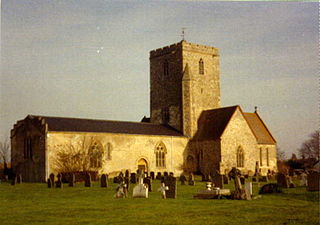
Cholsey is a village and civil parish 2 miles (3 km) south of Wallingford in South Oxfordshire. In 1974 it was transferred from Berkshire to Oxfordshire, and from Wallingford Rural District to the district of South Oxfordshire. The 2011 Census recorded Cholsey's parish population as 3,457. Cholsey's parish boundaries, some 17 miles (27 km) long, reach from the edge of Wallingford into the Berkshire Downs. The village green is called "The Forty" and has a substantial and ancient walnut tree.

Addingrove is a former hamlet in Buckinghamshire, about 4 miles (6.4 km) northwest of the market town of Thame in neighbouring Oxfordshire. The settlement is on the B4011 road between Oakley and Long Crendon.

Daniel Lysons (1762–1834) was an English antiquarian and topographer, who published, amongst other works, the four-volume Environs of London (1792–96). He collaborated on several antiquarian works with his younger brother Samuel Lysons (1763–1819).
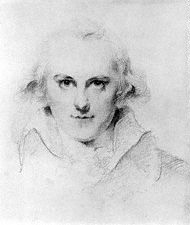
Samuel Lysons was an English antiquarian and engraver who, together with his elder brother Daniel Lysons (1762–1834), published several works on antiquarian topics. He was one of the first archaeologists to investigate Roman sites in Britain, and specialised in the study of mosaics.
Peregrine Hoby, was an English landowner and member of parliament who sat in the House of Commons at various times between 1640 and 1679.

New Quay is a small once industrial abandoned hamlet and intensive mining port on the steep, winding banks of the River Tamar in Devon. New Quay village is immediately east of and downstream of the similar port of Morwellham Quay. New Quay was an important copper, tin and later arsenic port serving the local mines including the George and Charlotte Mine, Bedford Consolidated Mine and Gawton Arsenic Mine. Since July 2006 New Quay is within the World Heritage Site that is the Cornwall and West Devon Mining Landscape.

Culgaith is a village and civil parish in the Eden district of Cumbria, England. It is located on the River Eden, between Temple Sowerby and Langwathby. At the 2001 census the parish had a population of 721, increasing to 826 at the 2011 Census.
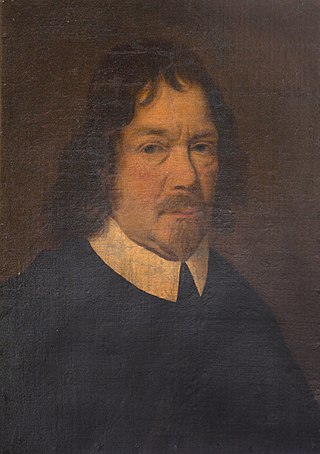
Sir William Pole (1561–1635) of Colcombe House in the parish of Colyton, and formerly of Shute House in the parish of Shute, both in Devon, was an English country gentleman and landowner, a colonial investor, Member of Parliament and, most notably, a historian and antiquarian of the County of Devon.
English county histories, in other words historical and topographical works concerned with individual ancient counties of England, were produced by antiquarians from the late 16th century onwards. The content was variable: most focused on recording the ownership of estates and the descent of lordships of manors, thus the genealogies of county families, heraldry and other antiquarian material. In the introduction to one typical early work of this style, The Antiquities of Warwickshire published in 1656, the author William Dugdale writes:
I offer unto you my noble countriemen, as the most proper persons to whom it can be presented wherein you will see very much of your worthy ancestors, to whose memory I have erected it as a monumentall pillar and to shew in what honour they lived in those flourishing ages past. In this kind, or not much different, have divers persons in forrein parts very learnedly written; some whereof I have noted in my preface: and I could wish that there were more that would adventure in the like manner for the rest of the counties of this nation, considering how acceptable those are, which others have already performed
Fulmer Place is a Grade II listed mansion at Fulmer in Buckinghamshire which was formerly the home of Lord John Hay.

Sir Richard Arches, of Eythrope, in the parish of Waddesdon, Buckinghamshire, was MP for Buckinghamshire in 1402. He was knighted before 1401.
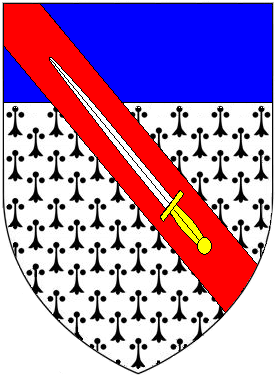
Thomas Gladwin of Tupton Hall, in the parish of Wingerworth near Chesterfield, Derbyshire, was Sheriff of Derbyshire in 1668.

The King's England is a topographical and historical book series written and edited by Arthur Mee in 43 volumes. The first, introductory, volume was published in 1936 by Hodder & Stoughton; in 1989, The King's England Press was established to reprint the series.
Charles Dalbiac (1726–1808) was an English Huguenot textile manufacturer. He was High Sheriff of Berkshire in 1784.
Brill Palace was a medieval English royal residence located in the village of Brill in the Aylesbury Vale. It was within the jurisdiction of the former Ashendon Hundred.
Cadell and Davies was a publishing company established in London in 1793. The business was formed when bookseller and publisher Thomas Cadell the elder (1742–1802) bequeathed his business to his son Thomas Cadell the younger (1773–1836) and the elder Cadell's apprentice William Davies. Cadell & Davies shut down after Davies death in 1819. Cadell continued in business until his own death in 1836.
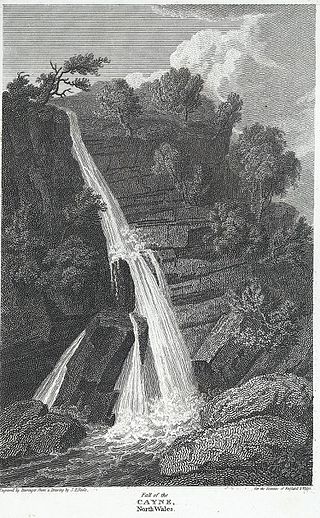
Major Samuel Barenger was a British engraver also known by his signature M.S. Barenger and S Barenger. His work was included in Cadell and Davies' Britannia depicta. One of his engravings was included in an 1809 publication featuring the architectural antiquities of Great Britain. According to the Benezit Dictionary of British Graphic Artists and Illustrators published by Oxford University Press he was active in London and exhibited in the Suffolk Street Gallery in 1823. He was also part of an 1821 exhibition in Soho Square. His works dates from 1807 until the 1830s. Two of his engravings based on his brother's paintings were included in the 1824 "Annals of Sporting".










